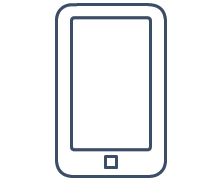What a Clean Car Costs: Learning to See White Privilege

A gas station near our house offers a carwash which I’d never used—until a sunny spring Saturday’s errand to gas up our van inspired me to rinse off its layers of Midwestern road crud. Then I experienced my most expensive—and enlightening—carwash yet.
Easy In
As the tank filled, I saw a sign pointing to the carwash entrance along the building’s left side. I tapped YES to the pump’s offer, chose the cheapest option, tossed the receipt in the van, and drove around.
I found the lane empty except for a couple of cars parked to the left. At the closed carwash door, a red CARWASH IN USE signal grabbed my attention. Soon a green ENTER CARWASH lit up. Grateful for simple directions (the control panel on the right looked complicated), I rolled inside the lifted door.
A Messy Exit
Other carwashes I’ve used pull a car through as you walk and pay. Getting to sit inside my van in this stationary, robotic storm recalled childhood carwashes. I marveled at coatings and rinses, pleased how far five dollars went. Then, bath time over, I drove slowly under fans to jet off moisture bumper to bumper.
When the exit door rose as I neared it, a stocky, serious, non-White man on his phone motioned me to stay put and then stepped away. I wondered if he managed the carwash.
A timer at the door reached zero, the fans stopped, and I rolled forward and lowered my window as the man reappeared.
“You just took my carwash!” he exclaimed.
Confused, I said something about the signals I’d followed.
“So you’re going to play dumb?”
My “I’ve never done a carwash here” didn’t change the incredulous look on his face. When I pulled forward a bit more I saw a police officer with my upset neighbor. The young officer kept us calm as he deftly drew out facts with direct questions.
I handed over my receipt for a tutorial on carwash protocol. We quickly agreed I owed my neighbor for the 10-dollar wash he’d paid for half an hour ago that I used when I skipped the line. My wallet held one cash dollar. At the officer’s suggestion, I used the ATM inside to get more.
Back outside, we settled as generously as I was allowed. I apologized for not looking for instructions and thanked them for the lesson. And then we parted ways with a handshake, neither of us fully satisfied. My neighbor was still out his wait time, place in line, and carwash. I had a clean van and an unused code good for weeks. The officer wished us both a better rest of the day.
Ignorance Was Bliss
It’s not every day I have a run-in with the law. The ignorance with which I’d acted was humbling; an energetic response didn’t make it easier.
As I reflected on the encounter, it reminded me of my more gradual awakening a few years ago to the reality of White privilege. I’d acted on opportunities that opened to me at each step, unaware I was bypassing standard protocol, breaking trust, and wronging a neighbor. Ignorance was bliss, and even my re-education was relatively painless.
I have lots of unanswered questions: How and when do I enter the code from the receipt? Why wasn’t I interrupted in the moments before my carwash? None of these questions erase the reality of carwash operations. I’ll learn more as I stay engaged in the learning process. Neighbors will appreciate that and some may be glad to explain what I need to understand.
Breaking It Down
The normal carwash process existed long before I arrived, whether I knew it or not. So it is with the school-to-prison pipeline highlighted by Justified Anger in Madison and #BlackLivesMatter nationwide. I was wrong to ignore it and do my own thing. Unlike the carwash, racial inequities need changing. So do I if I’m to be part of the solution.
The interaction raised other questions: Why was I so much less upset than my neighbor? Did my relative ignorance of his background in addition to carwashes contribute to the distrust? Could we have solved our problem without calling the police? What other experiences led my neighbor to assume the worst about me? Did I miss an opportunity for significant conversation and reconciliation? Did I show enough respect for both the officer and my neighbor? I certainly felt no fear.
There was more in play than a few dollars’ transaction and the relational challenge. Even more than setting right a one-off neighborly interaction, I needed to come to terms with a system. And with my impaired vision.
My experience in this lived parable carried the important application: Would I acknowledge how ignoring the system disadvantaged others? Would I do what I could to correct that? Would I keep on learning, open to change?
We can’t shed White privilege like a car sheds its dirt. But we can learn to leverage what power we have to benefit others, not just ourselves. Will you join me in paying better attention to the systems we participate in so we can see changes that truly advantage our neighbors?
On InterVarsity’s IT Services Help Desk team, John gets to translate appropriate technology in this collegiate Jesus movement. He’s been failing at hacky-sack since his student days over 30 years ago. His wife, Dyann, and their three children currently also work in different roles with InterVarsity.
Image by 2100 intern Ika Chang.
You might also find these resources helpful:
Cross-Ethnic Advocacy and Racial Reconciliation in America



